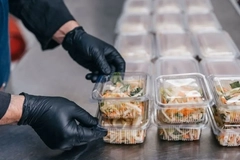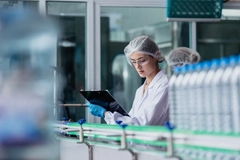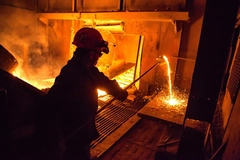Inside India’s PET recycling: APR Bharat director general maps policy, capacity and export ambitions
Legislation has successfully boosted India’s PET recycling industry, accelerating food-grade usage and recyclate exports. We discuss these developments with India’s Association of PET Recyclers Bharat (APR Bharat), a coalition of PET recyclers, manufacturers, and other stakeholders.
Packaging Insights speaks to Goutham Jain, the director general at APR Bharat, about the coalition’s role in the country’s recycling efforts, the local regulatory environment, and the benefits and future outlook of India’s rPET recycling sectors.
How does APR Bharat fit into India’s larger recycling ecosystem?
Jain: APR Bharat, an association dedicated to addressing the concerns faced by the food-grade rPET industry, is at the forefront of India’s recycling landscape. The association has been driving policy advocacy and regulations in the PET industry with a focus on advancing sustainable practices and building a circular economy with minimal resource exploitation.
APR Bharat is a dedicated industry body championing the interests of India’s food-grade rPET industry. Positioned at the forefront of the nation’s recycling ecosystem, the association plays a pivotal role in shaping public opinion, policy frameworks, and regulatory standards for the PET industry.
With a strong emphasis on sustainability, APR Bharat actively promotes closed-loop manufacturing, which aims to minimize resource exploitation and foster responsible production and consumption practices.
What policies are in place to push PET recycling in India, and are they effective?
 APR Bharat highlights that India food-grade rPET is growing rapidly.Jain: The policy landscape and regulatory reforms over the years have played a pivotal role in providing the foundational ecosystem for food-grade PET recycling in India. The Swachh Bharat Mission (The Clean India Mission) was launched in 2014, focusing on improving solid waste management in urban and rural areas.
APR Bharat highlights that India food-grade rPET is growing rapidly.Jain: The policy landscape and regulatory reforms over the years have played a pivotal role in providing the foundational ecosystem for food-grade PET recycling in India. The Swachh Bharat Mission (The Clean India Mission) was launched in 2014, focusing on improving solid waste management in urban and rural areas.
A key component of the mission was to ensure a robust mechanism is in place for the segregation, collection, and processing of solid waste management, including plastic waste.
The 2016 Plastic Waste Management Rules (PWM Rules) and their amendments over the years, especially in 2022, have set the groundwork for EPR. These rules establish the responsibility of all stakeholders, including producers, importers, brand owners, processors, and raw material manufacturers among other stakeholders. In line with the regulations followed in the US and EU, India has also allowed the usage of rPET for food contact packaging.
The PWM Rules also mandate the use of rPET in the plastic packaging industry, gradually increasing from the current mandate of 30% to 60% usage by 2028–29, thus clearly indicating the government’s push to promote the rPET industry.
The policies and regulatory frameworks have been very effective in boosting the country’s PET recycling industry. Over the next few decades, we are confident that India will be a world leader in PET recycling, with a strong focus on boosting exports of rPET as well.
Can India become an exporter of rPET, or will domestic demand outpace supply?
Jain: The current annual capacity of the food-grade rPET industry in India is 461,000 metric tons, with additional annual capacities of 750,000 metric tons to be added by the end of 2026, bringing the total annual capacity to 1.2 million metric tons by the end of next year. India is well-positioned to cater to both domestic demand and export requirements. We are confident that over the next decade, India will be a key global hub for the rPET industry.
How significant is the role of PET recycling in helping India reduce its overall carbon footprint?
 Four million workers sort and recycle PET bottles in India.Jain: India has an efficient PET recycling system backed by a three-decade-old, mechanical PET recycling ecosystem. This system recycles 95% of used PET bottles (1.63 million metric tons) in the country. India has an annual PET recycling capacity of 5 lakh tonnes (500,000 metric tons). In the last three years, the sector attracted an investment of over ₹10,000 crore (US$1.15 billion).
Four million workers sort and recycle PET bottles in India.Jain: India has an efficient PET recycling system backed by a three-decade-old, mechanical PET recycling ecosystem. This system recycles 95% of used PET bottles (1.63 million metric tons) in the country. India has an annual PET recycling capacity of 5 lakh tonnes (500,000 metric tons). In the last three years, the sector attracted an investment of over ₹10,000 crore (US$1.15 billion).
The PET recycling industry is estimated to reduce India’s carbon footprint by 2.6 million metric tons of CO2. Over the years, the reduction in carbon footprint would increase considerably with new investments in the growing PET recycling ecosystem in India.
Considering the important role rPET plays in the reduction of resources used for virgin plastic, the PET recycling industry plays an important role in the reduction of India’s overall carbon footprint.
How aligned is PET recycling with India’s path to net-zero emissions by 2070?
Jain: The PET recycling industry is well aligned with India’s path to net-zero emissions by 2070. Over the years, India’s PET Industry has evolved as an industry backed by a robust recycling ecosystem, with the government’s push on waste collection, segregation, and material recovery facilities at the grassroot level under the Swachh Bharat Mission
As per industry estimates, four million members of the labor workforce across India are involved in used PET bottle collection, thus ensuring a strong raw material ecosystem for the food-grade rPET industry in the country.
Considering the multifold demand over the last few years and regulatory push for use of food-grade rPET for food contact packaging and mandatory use of 60% recycled plastic content in food plastic packaging by 2028–29 (highest by any country in the world), we are confident that food-grade PET Recycling industry would accelerate the timeline for net-zero emissions for India.
In addition, with higher demand for food-grade rPET, we foresee large-scale investments in the sector, which would play a significant role in the government’s overall push to reduce carbon emissions and reduce resource exploitation over the next few decades.











